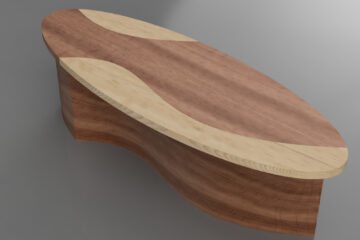You can start your product development process by creating a concept and design. After that, you can develop a roadmap, which will outline the steps of the product development process. It will also help you know what costs are involved. This article will provide some tips on how to make the most out of your product development process. After reading this article, you will be well on your way to product development success. So, how do you get started?
Process
The process of product development is the process of creating a new product or modifying an existing one to make it more appealing. The entire process begins with an idea and ends with the final product being tested in a test market, a sample population selected with care to determine the success of the new product. If the product proves to be a success, it will eventually be released to the target market. Before any of these stages begins, the business must identify its target niche, and determine how to make it attractive to the audience.
The Process of product development has been around for as long as there have been goods and services. Historically, products were mostly agricultural produce, farm tools, and textiles. It was common practice to design and fashion an item to suit its purpose and market. As time went on, textiles became traded goods, and textile producers specialized in designing products that looked good and sold well. In addition to pursuing the market, farmers and artisans also developed and refined their skills, as they would later do for the next generation of PMs.
A prototype is a tiny version of a product that is made with the cheapest resources possible. Its purpose is to test the product’s marketability and sellability. If the prototype fails, the company can develop an alternate product. In any case, the final stage is the actual product development. A prototype serves as a valuable tool in the process of product development. It also gives a rough idea of how a product might sell in the market. If it does not, it can be used as a guide for a different product.
Steps
The steps involved in product development involve brainstorming ideas, validation with target audiences, planning, and conceptualization. Once ideas have been vetted, the next step is to determine the best path to commercialization. During the conceptual stage, companies should consider pricing, distribution, and supplier options, and then work toward a working prototype. Each step in the process will require the involvement of different parties. Listed below are some key steps to product development.
The first step is concept generation. A concept that is not yet in the market isn’t feasible to develop. In the next step, product development, the company determines whether the product will be feasible and profitable. This step will be easier for a company if it segmented its market and determined which customers are most likely to buy the product. The role of the marketer is important during the new-product development process, because they identify and evaluate potential products. Marketers also collaborate with R&D and other stakeholders to develop new products.
Once the concept is developed, it’s time to develop the product. This process involves planning the marketing strategy and determining how to make the product financially attractive. After development, the product goes through test marketing, where the market will be tested to make sure it’s a viable solution. If a successful test marketing campaign is conducted, the product moves on to commercialisation. If all goes well, the product can be launched on the market.
A good company should listen to feedback from their target audiences. The steps involved in new product development allow a company to sift through ideas and choose the best one. They also give their teams the chance to collaborate in a more effective way. Using a product development software like Asana can help a company streamline the entire process. This will help the team get the job done without too much hassle. When a company wants to develop new products, they can also use a product management software, such as IdeaScale.
Stage-gate phase
The stage-gate phase of product development is a vital component to the success of a new product. The standard model consists of gates that determine whether the product will move forward or back to the previous Stage. In the life science industry, for example, the FDA requires that design and planning controls be in place before the product can be launched. Medical device companies are also required to implement circuit breakers to check efficacy and output against specification. The Stage-gates are auditable and documented. The problem that plagues developers is the dreaded “difficult second album syndrome.” Once a product has been successful, the company struggles to recreate the magic.
The Stage-Gate process breaks projects into phases and then includes a review gate at the end of each stage. Gates are particularly useful for large projects with many stakeholders. They enable key stakeholders to review the progress of the project and determine whether it is viable. Once the project has reached its final stage, the project moves on to the next phase, which is usually testing. During the development phase, it is essential to align marketing plans with the product development process, as well as the project timeline.
Once the prototype is ready, it goes through a series of tests with a small control group of consumers. Their feedback helps in ironing out any bugs or kinks in the product. The testing phase also helps with making edits and applying the final touches. At the end of the stage-gate phase, the product is ready for launch. It’s at this stage that the marketing team works closely with the product development team to identify a market need and increase its exposure.
Costs
A simple prototype can cost between $10k and $30k, but if you need a more sophisticated one, the costs can be in the hundreds of thousands of dollars. Project costs depend greatly on the type of product and its complexity, so these figures are just a general guide. It is recommended to get an estimate of costs before you begin. This article will also help you understand how to reduce the costs associated with product development. It’s also worth considering the human cost of developing a product.
Design to cost is a cost management methodology that incorporates cost estimation for each cost factor during the development process. This method is often implemented through Design to Cost Reviews, where managers continuously evaluate a product’s design for conformance to target costs. These reviews can be incorporated into special or traditional design and development reviews. Managers can apply corrective actions at any point in the development process, such as updating intermediate target costs or design updates. The same approach can be applied to cost reduction through value engineering.
While absorbing costs is an important consideration for product development, it is not enough to keep these costs in mind. You also need to understand how these costs affect the gross profit margin. Overdeveloped products are likely to fail to make a profit, which means that companies should monitor costs carefully and plan accordingly. While costs are a necessary part of any product development process, they can also have significant consequences for profits. The right approach is to avoid excessive development to maximize profits.
Customer feedback
Gathering customer feedback during product development is an ongoing process that leads to innovation. There are many ways to collect customer feedback. Regardless of your product’s size and function, you can benefit from asking your customers for their input. Below are some of the best ways to solicit feedback from your target audience. The best way to get customer feedback is to ask for it! Listed below are the benefits of asking customers for feedback. They can give you invaluable insights into what your customers want.
Use your research to learn more about what your customers really want from your product. Asking questions and listening to their answers can help you understand what they need from your product. Use the data you have collected in the past to determine the “hits” and “misses” of your software. This will help you incorporate customer feedback during product development. Providing a good customer experience can put your business on the fast track to success. According to recent statistics, 32% of consumers are ready to abandon a company after a bad experience.
Follow up on customer feedback. Follow up with customers and your customer support team to see how they are using your product. When possible, respond to comments or ask for feedback directly. eBay’s community forums were the main source of feedback and new features. I always appreciated hearing from eBay community members, as it showed the product team cared. It helped me create a product that satisfied my customers and helped them grow. The best way to listen to customer feedback is to make sure you are in tune with what they want.
Use software analytics tools to measure how your customers use your products. This way, you can avoid developing features that your customers don’t want. In addition, your sales team is in constant contact with prospects, so they can easily identify major pain points. Productboard’s Salesforce integration can help capture customer feedback and identify dealbreakers for prospective customers. With integrations for Microsoft Teams and Slack, Productboard can help you gather feedback and customer data.



0 Comments